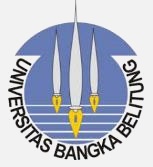LGBTQ+ EXISTENCE IN INDONESIA: INVESTIGATING INDONESIAN YOUTH’S PERSPECTIVES TOWARDS THE LGBTQ+ COMMUNITY
Abstract
The presence of lesbian, gay, bisexual, transgender, and queer communities is a mandatory requirement. Even though the LGBTQ+ community is a group of people concerned about religious belief, Indonesians even now regard LGBTQ+ as transgression and sin. Those who do not consequently approve of same-sex marriage. Interestingly, this perception has been disputed because, in reality, others may have started to be open-minded and fully accept the prevalence of LGBTQ+ people in LGBTQ+ communities. This study used qualitative research to investigate the perspective of Indonesian younger generations towards the LGBTQ+ community in Indonesia. The researcher used the questionnaire as an instrument for data collection with ten questions required to fulfilled by Indonesian youth to investigate their perspectives. The study's data is collected from Indonesian participants, with a total of was eighty-three Indonesian youths between the ages of 15-26 in all around Indonesia. Since the issue of the study is quite sensitive in Indonesia, there are sure of positive and negative perspectives that are also apparent in the result of questionnaires. In a nutshell, the study's aim will further help the authorities take precautions to be incorporated in the future. Also, it is to investigate the Indonesian youths from a different background of beliefs and perspectives toward the LGBTQ+ community. The implication of this research informed young people of the LGBTQ+ subculture to Indonesian parents and teachers as those responsible for educating young kids so that they would not be adversely affected by this social phenomenon.
Downloads
References
American psychological association. (1975). For a better undestanding of sexual orientation & homosexuality. Identity, 2(September), 1–6. Retrieved from www.apa.org/topics/sorientation.pdf.
Burns, C., & Krehely, J. (2011). Gay and transgender people face high rates of workplace discrimination and harassment data demonstrate need for federal law. American Progress, (May), 1–4.
Cam, L., & Tran, T. M. T. (2017). An evaluation of using games in teaching English grammar for first year English-majored students at Dong Nai Technology University. International Journal of Learning, Teaching and Educational Research, 16(7), 55–71. Retrieved from https://pdfs.semanticscholar.org/ea44/48f1c6cbb8dab7420abbd20a993a86728206.pdf
Firdiansyah. (2016). “LGBT Marak, Apa Sikap Kita?” dalam sebuah diskusi Indonesian Lawyer’s Club (ILC) di TV.ONE.
Harahap, R. D. (2016). LGBT DI INDONESIA : Perspektif Hukum Islam, HAM, Psikologi dan Pendekatan Maṣlaḥah. Al-Ahkam, 26(2), 223. https://doi.org/10.21580/ahkam.2016.26.2.991
Hickey, P. (2011). Homosexuality: The mental illness that went away. Behaviorism and Mental Health, 8.
Lindesmith, A. R., Cory, D. W., & Ellis, A. (1952). The Homosexual in America: A Subjective Approach. American Sociological Review. https://doi.org/10.2307/2088387
PBB, M. U. (2006). Deklarasi Universal Hak-Hak Asasi Manusia. Indonesian Journal of International Law, 4(1), 133–168. https://doi.org/10.1017/CBO9781107415324.004
Quinn Patton, M., & Cochran, M. (2007). A Guide to Using Qualitative Research Methodology. In Medecins Sans Frontieres. Retrieved from http://msf.openrepository.com/msf/handle/10144/84230
Riadil, I. G. (2020a). A Study of Students’ Perception: Identifying EFL Learners’ Problems in Speaking Skill. International Journal of Education, Language, and Religion, 2(1), 31–38.
Riadil, I. G. (2020b). AN ANALYSIS OF ENGLISH MODALS IN MODAL VERB PHRASE STRUCTURES IN EDUCATIONAL ESSAYS OF ‘SHERRY JOHNSON’AND ‘TAMJID MUJTABA.’ Jurnal Pendidikan Bahasa, 9(1), 131–142.
Rosenstreich, G. (2013). LGBTI People Mental Health & Suicide. Revised 2nd Edition. National LGBTI Health Alliance, 5–20.
SANTOSO, M. B. (2016). Lgbt Dalam Perspektif Hak Asasi Manusia. Share : Social Work Journal, 6(2), 220. https://doi.org/10.24198/share.v6i2.13206
Saroh, Y.-, & Relawati, M. (2017). Indonesian Youth’S Perespective Towards Lgbt. Humanus, 16(1), 71. https://doi.org/10.24036/jh.v16i1.7323
Sujana, I. N., Setyawati, K. A., & Ujanti, N. M. P. (2018). the Existence of the Lesbian, Gay, Bisexual and Transgender (Lgbt) Community in the Perspective of a State Based on Pancasila. Mimbar Hukum - Fakultas Hukum Universitas Gadjah Mada, 30(1), 126. https://doi.org/10.22146/jmh.28655
The American Psychological Association. (2008). Answer to Your Questions: for a Better Understanding of Sexual Orientation & Homoseuality. Retrieved June 11, 2020, from apa.org website: https://www.apa.org/topics/lgbt/orientation
Copyright (c) 2020 Owned by the Author(s), published by Berumpun: International Journal of Social, Politics and Humanities

This work is licensed under a Creative Commons Attribution 4.0 International License.










